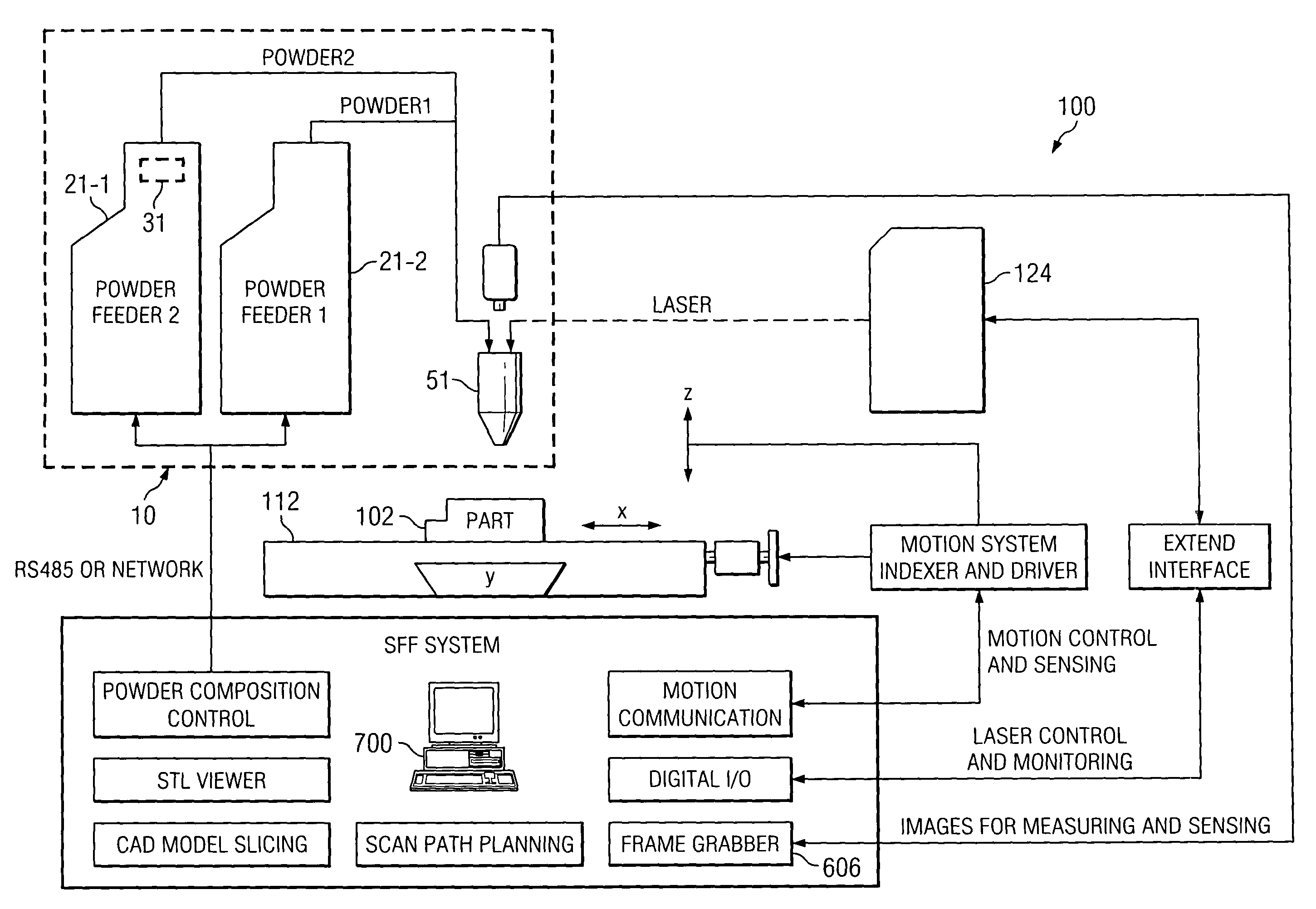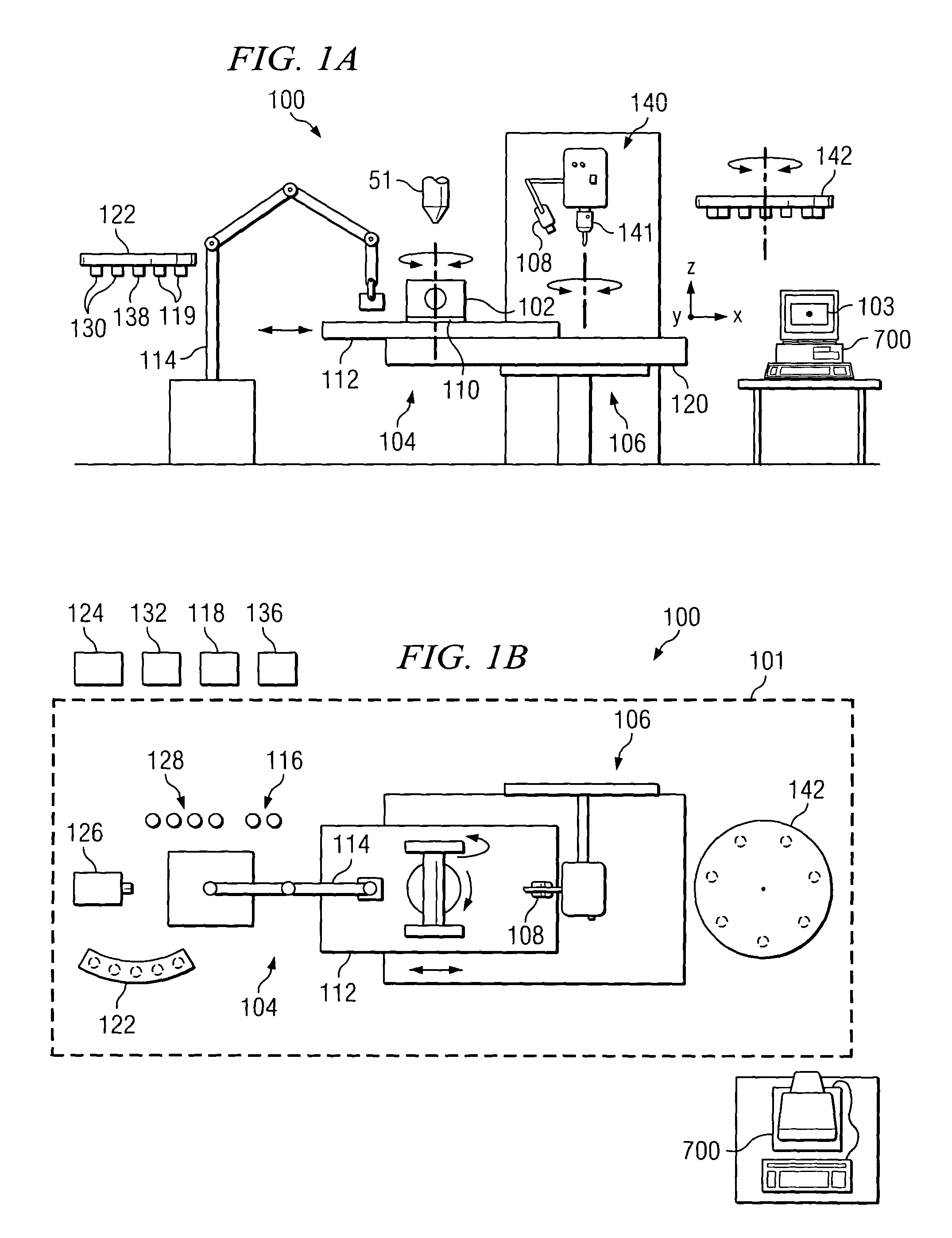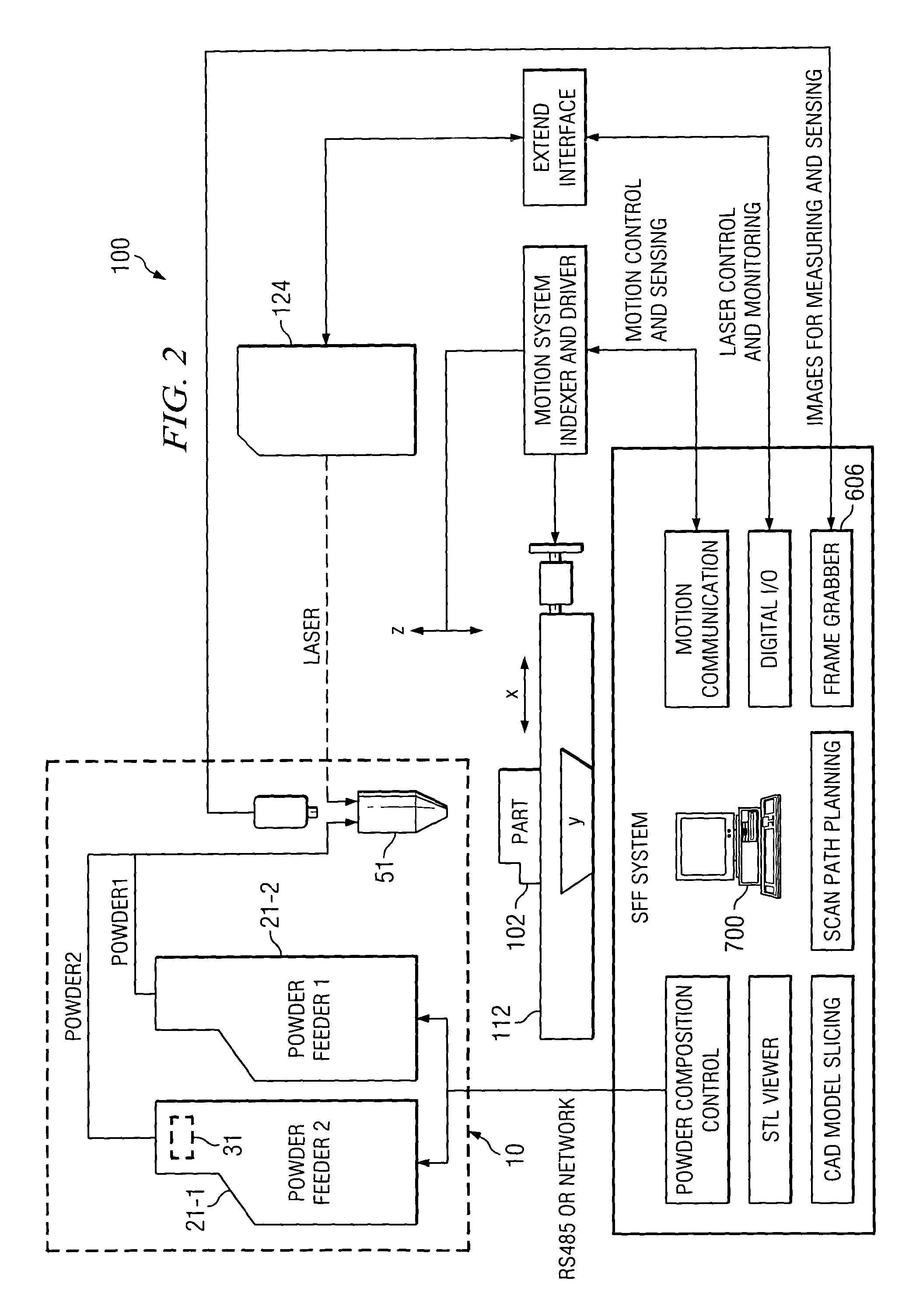System and method for controlling the size of the molten pool in laser-based additive manufacturing
a technology of laser-based additive manufacturing and molten pool, which is applied in the field of rapid manufacturing, can solve the problems of increasing cost and process planning complexity at the expense of manufacturing more complex parts (i.e., overhangs), and achieve the effect of improving the geometric accuracy of parts
- Summary
- Abstract
- Description
- Claims
- Application Information
AI Technical Summary
Benefits of technology
Problems solved by technology
Method used
Image
Examples
Embodiment Construction
[0022]Example embodiments of the present invention and their advantages are best understood by referring now to FIGS. 1A through 9 of the drawings, in which like numerals refer to like parts.
[0023]FIGS. 1A and 1B are elevation and plan views, respectively, of a system 100 for manufacturing or repairing parts according to one embodiment of the invention. As described below, this multi-fabrication system provides the capability to make complex parts having internal and external geometric features with high dimensional accuracy and superior surface quality. For example, the same setup for one computer controlled system platform, system 100 may perform the following operations: four additive operations and / or their combination, a plurality of subtractive operations, in-process and post-process inspection, and scanning for reverse engineering. The combination of additive and subtractive processes exhibits some technical advantages, such as the production of more accurate complex parts, a...
PUM
| Property | Measurement | Unit |
|---|---|---|
| Wavelength | aaaaa | aaaaa |
| Wavelength | aaaaa | aaaaa |
| Size | aaaaa | aaaaa |
Abstract
Description
Claims
Application Information
 Login to View More
Login to View More - R&D
- Intellectual Property
- Life Sciences
- Materials
- Tech Scout
- Unparalleled Data Quality
- Higher Quality Content
- 60% Fewer Hallucinations
Browse by: Latest US Patents, China's latest patents, Technical Efficacy Thesaurus, Application Domain, Technology Topic, Popular Technical Reports.
© 2025 PatSnap. All rights reserved.Legal|Privacy policy|Modern Slavery Act Transparency Statement|Sitemap|About US| Contact US: help@patsnap.com



